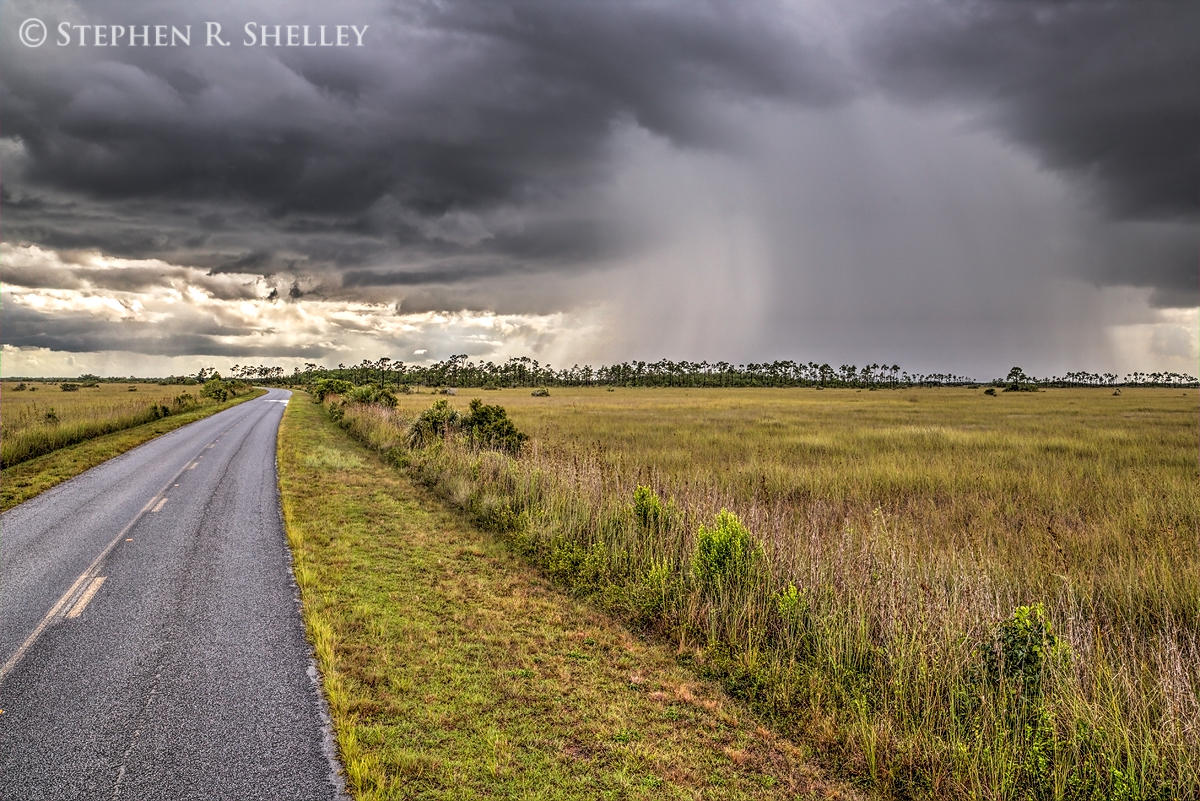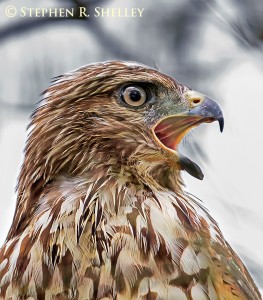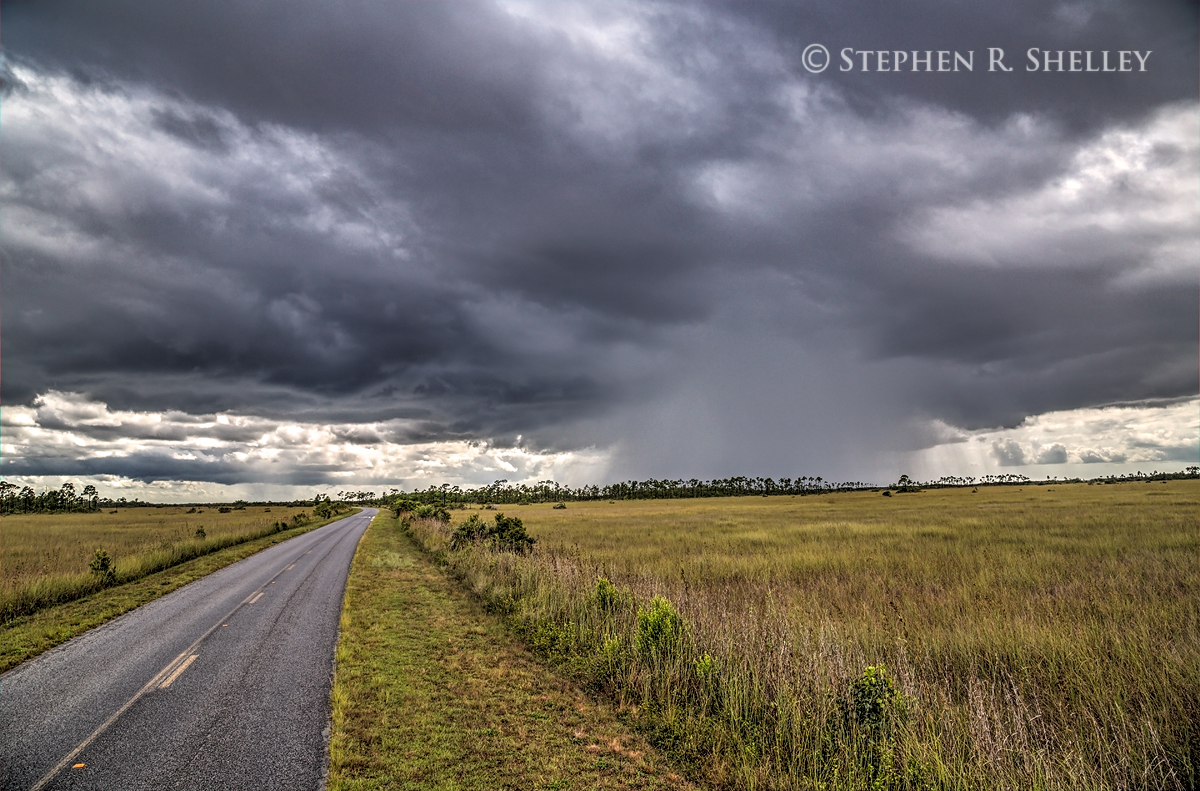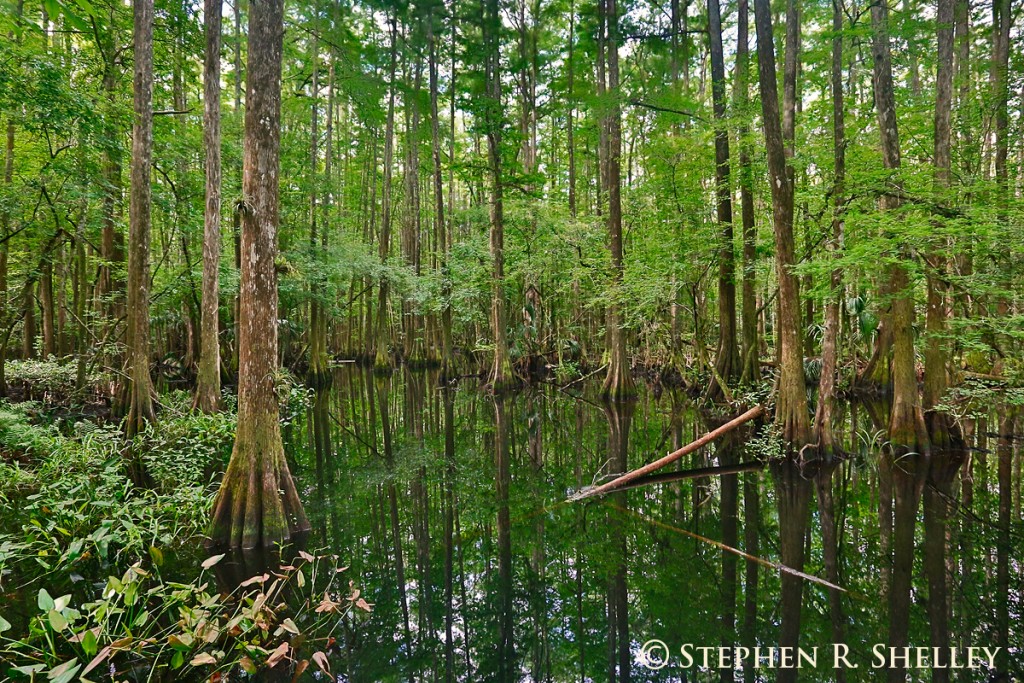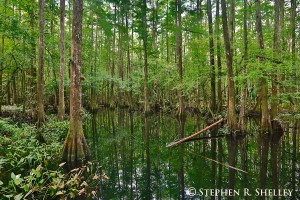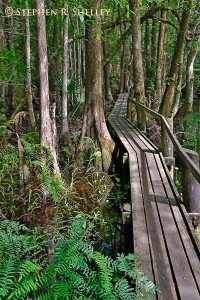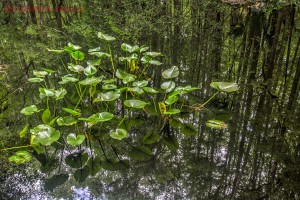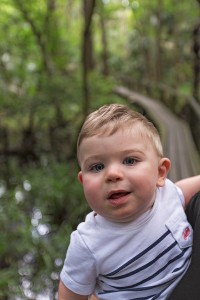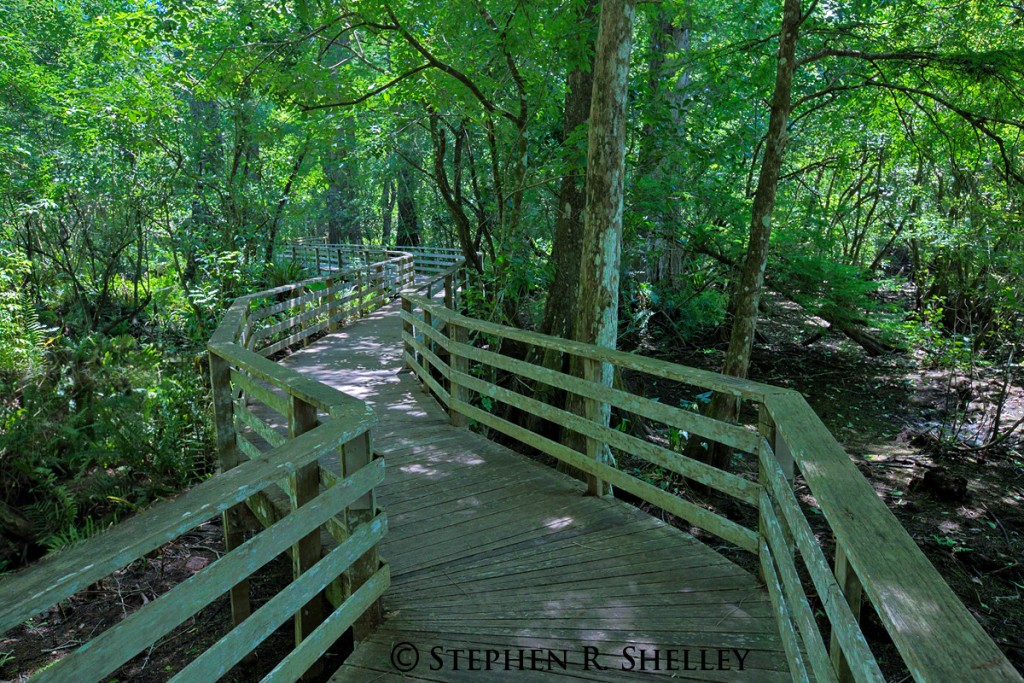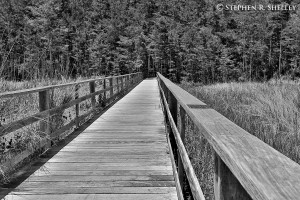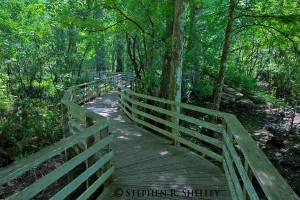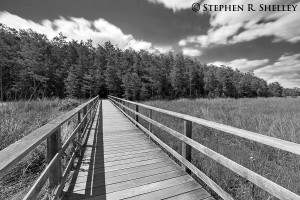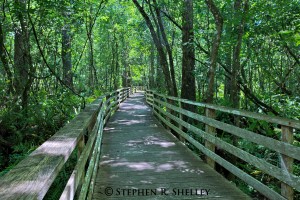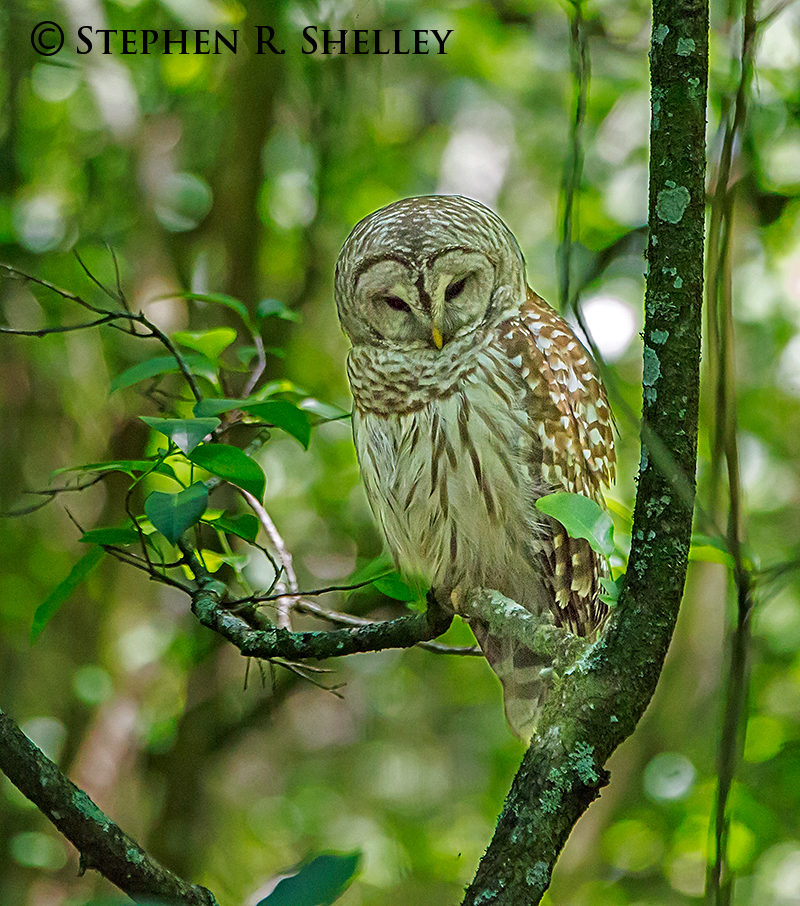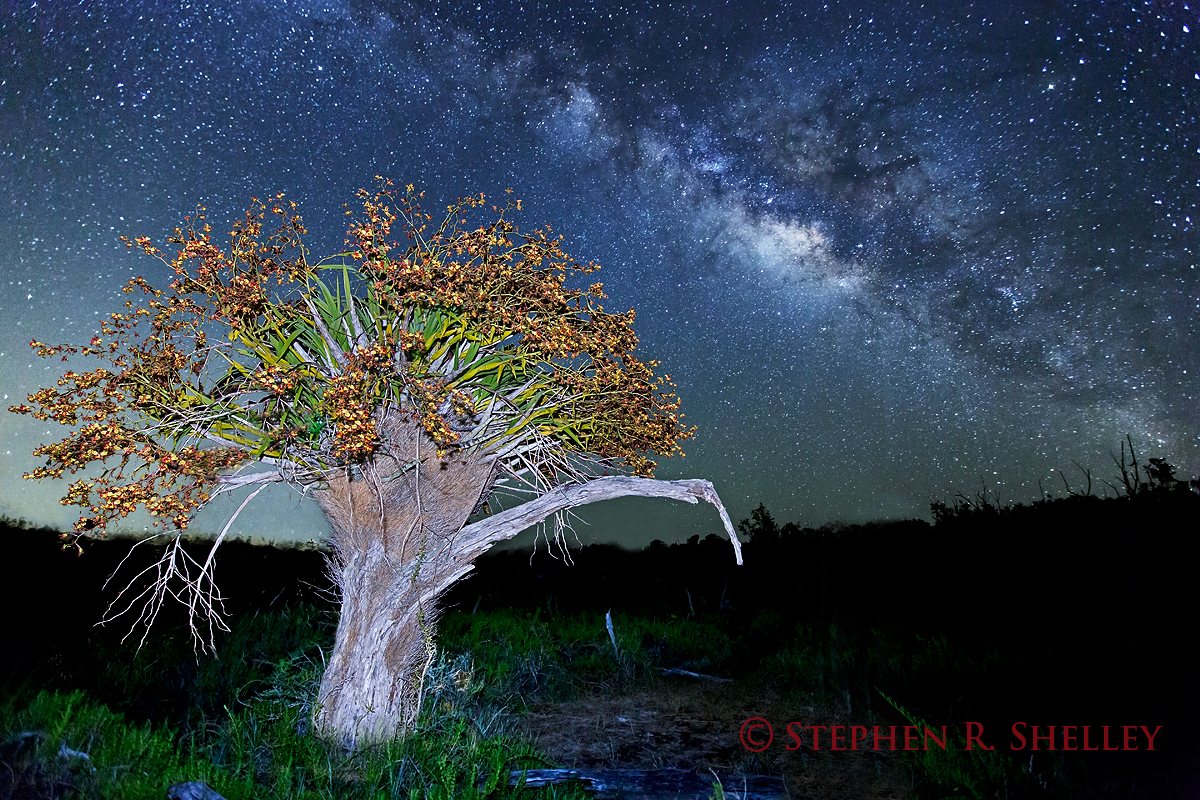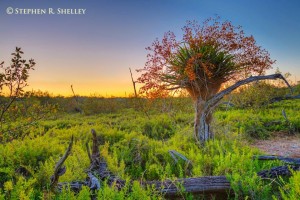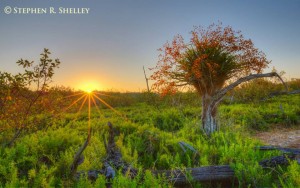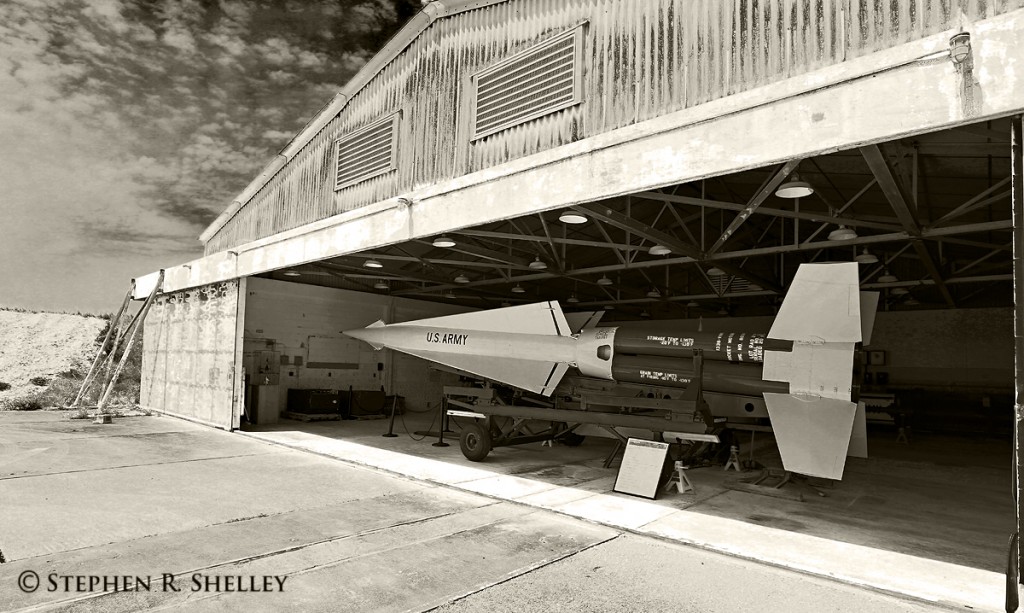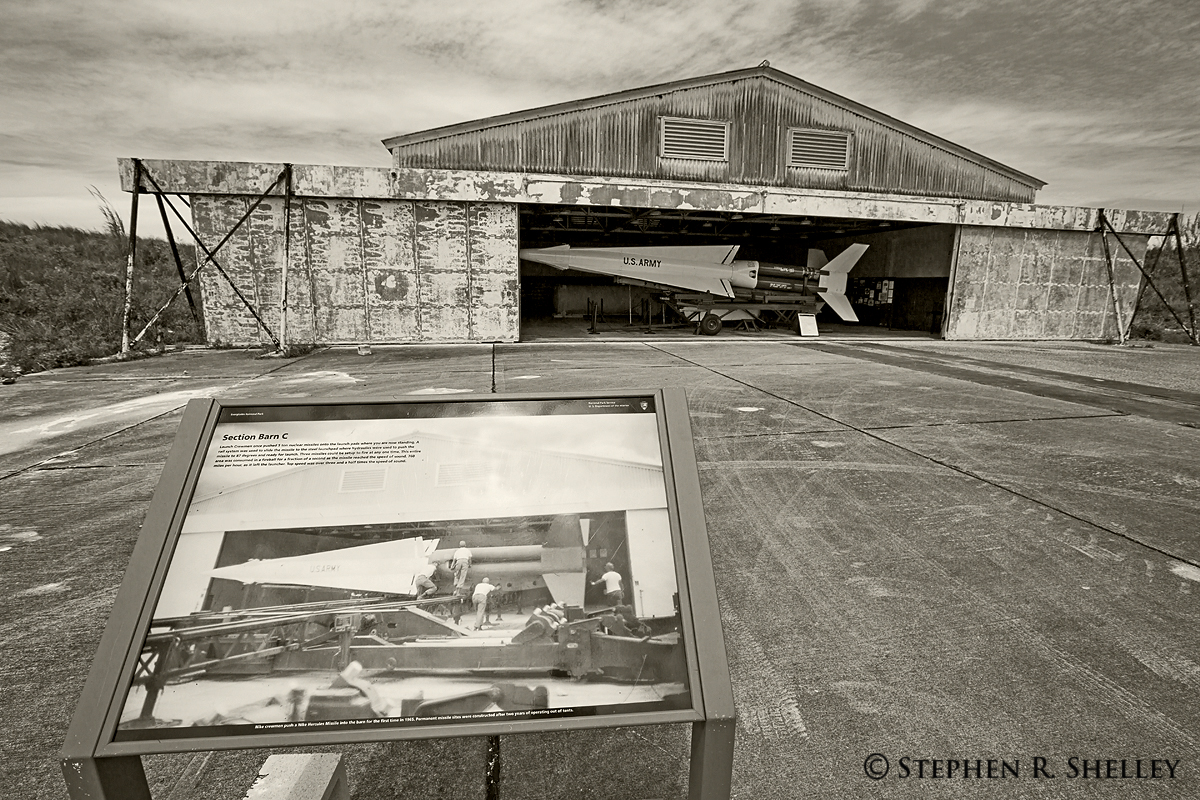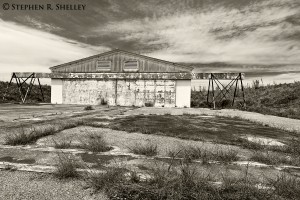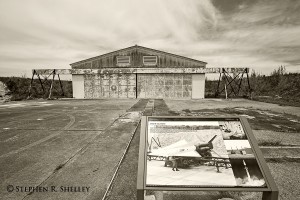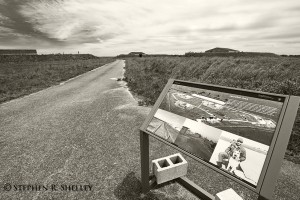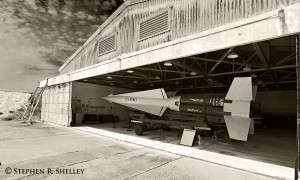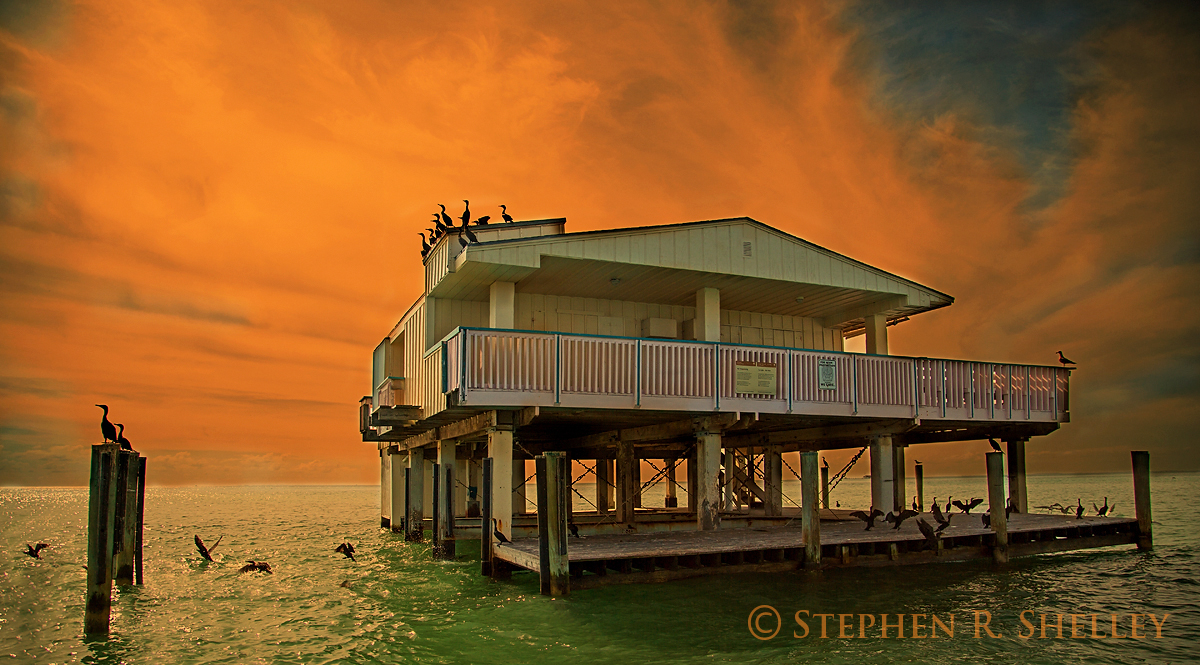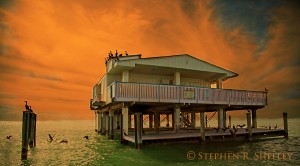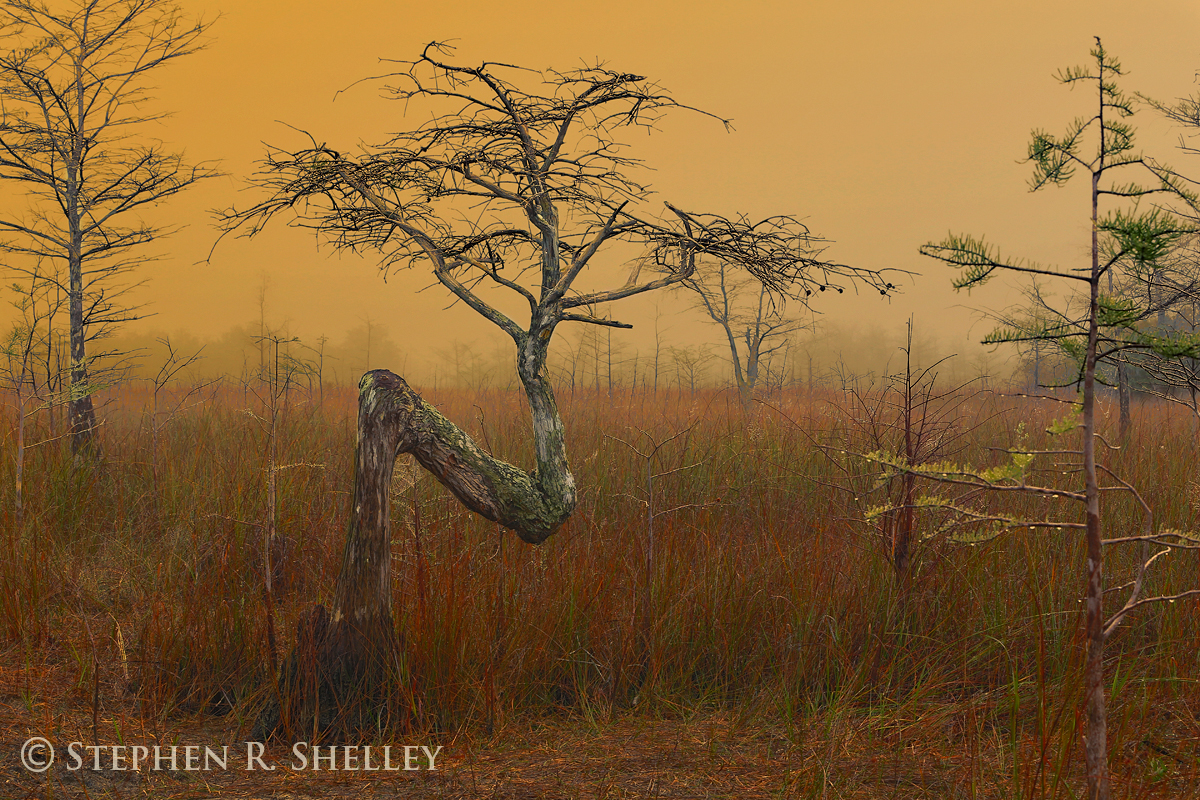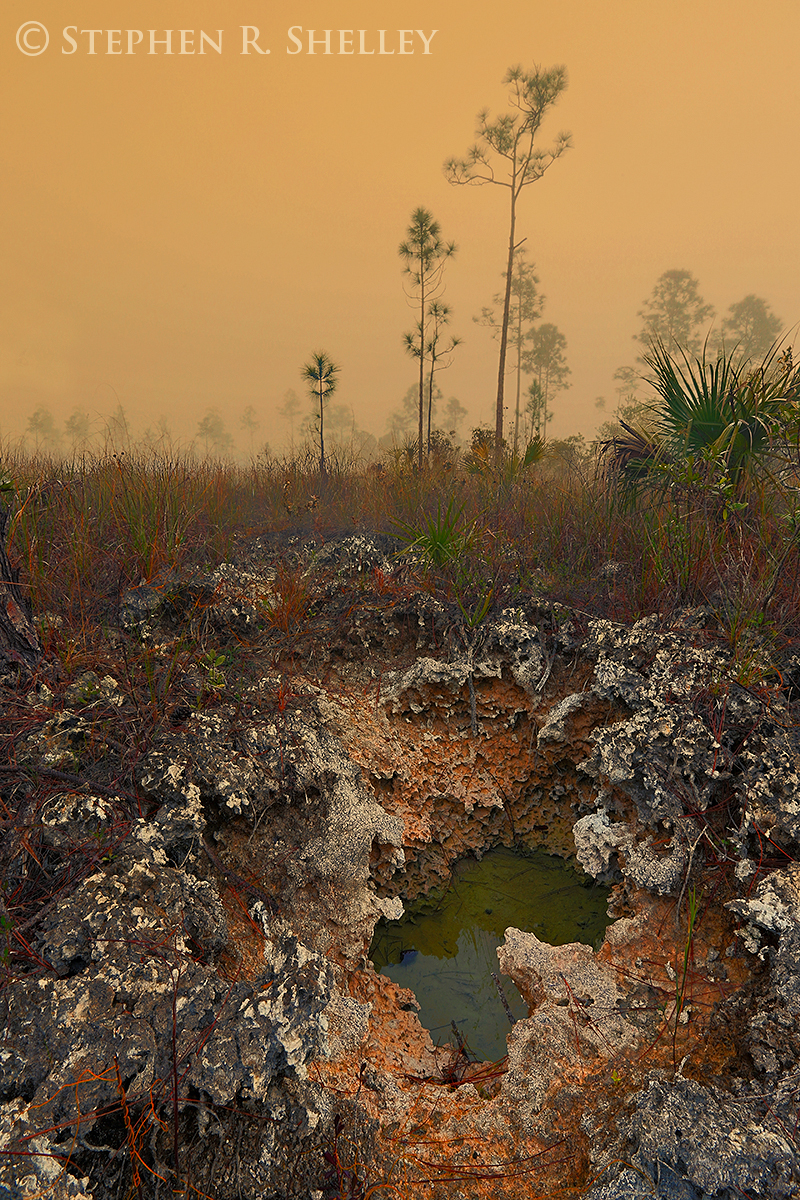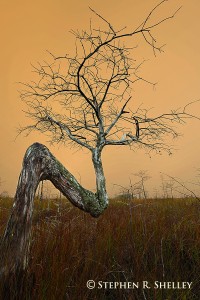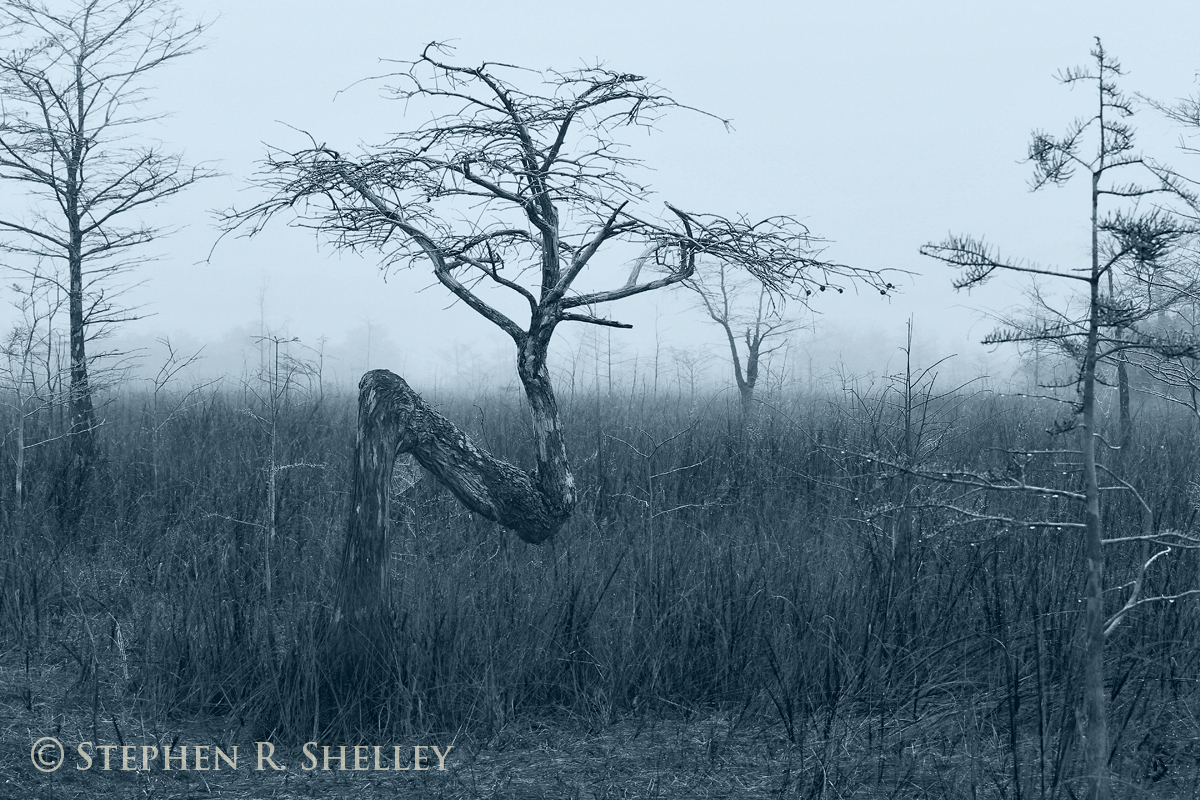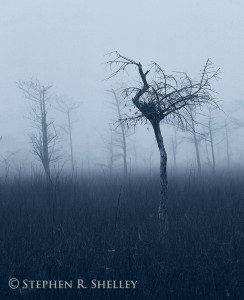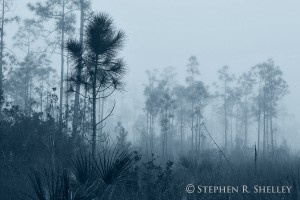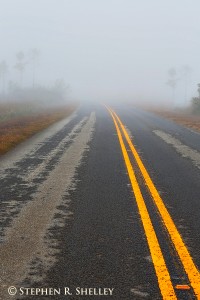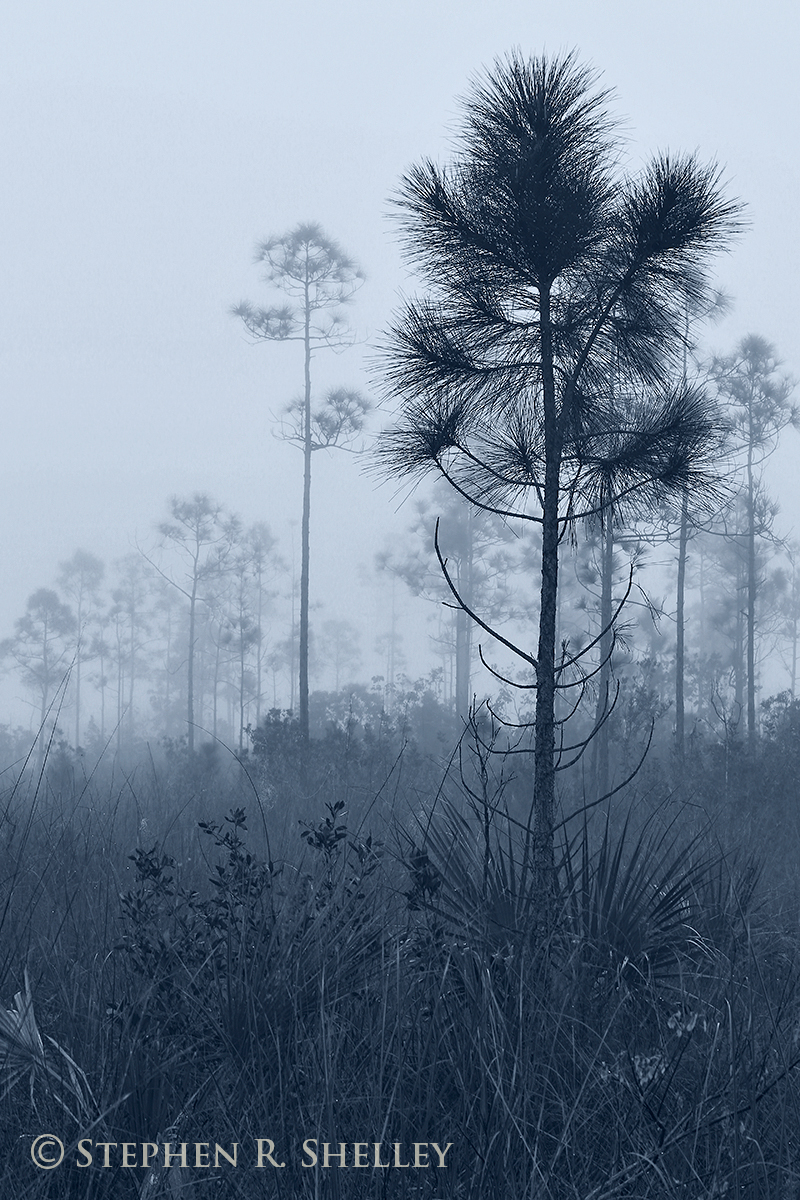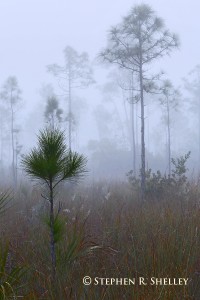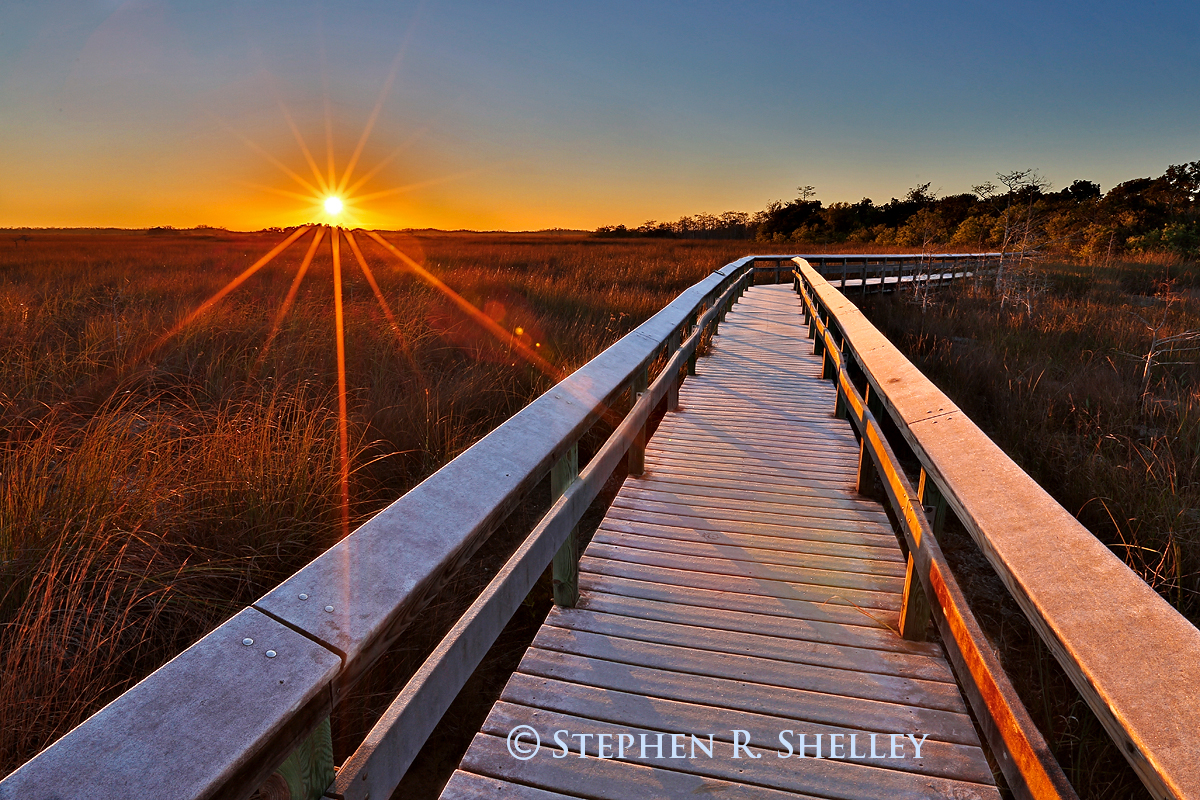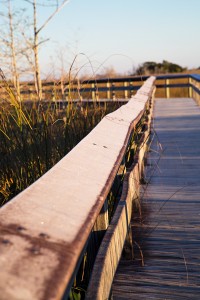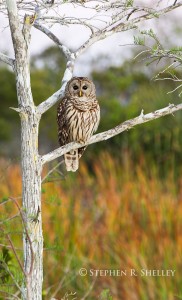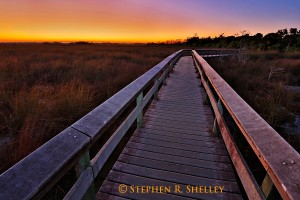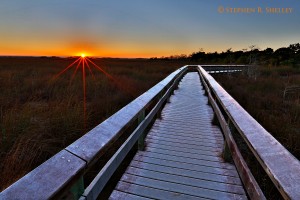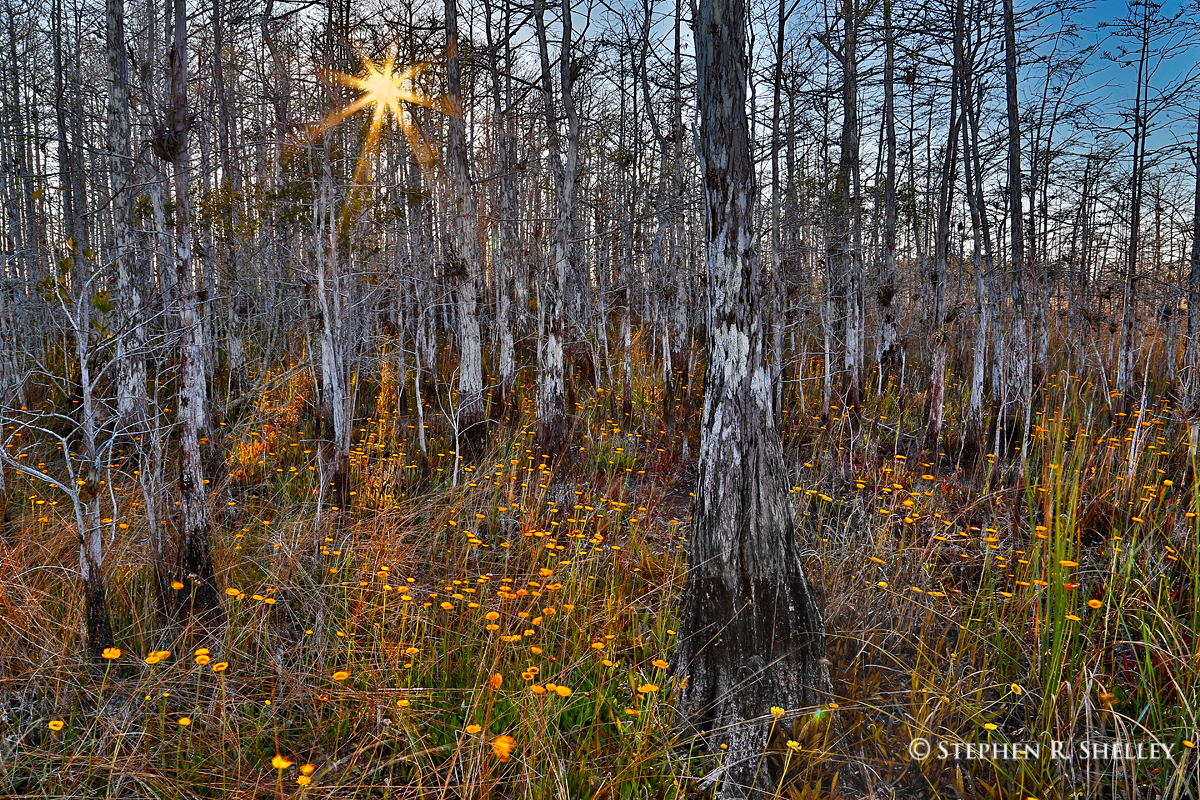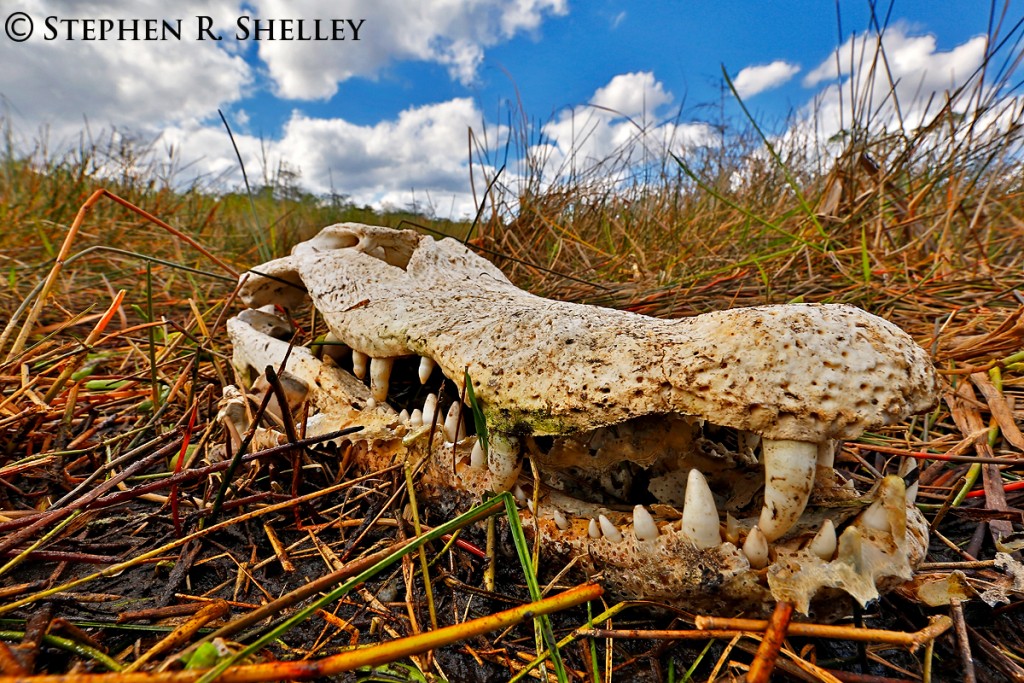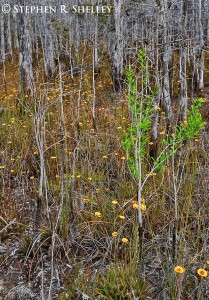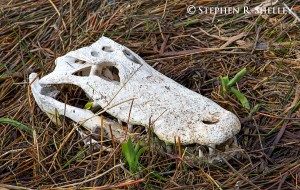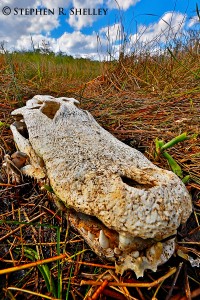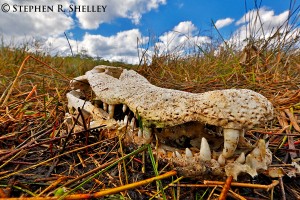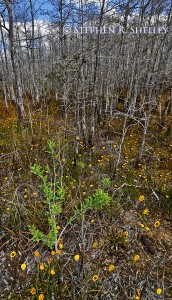For Presidents Day I decided to take a day trip out to Everglades National Park to explore a few trails and Cypress Domes I have not been to in a while. The weather was great, not to hot, and there were little to any bugs to speak of.
I started my journey in a well known Cypress Dome called Double Dome. Most of the dome was dry except for the deep hole in the middle and few deeper spots here and there. However, dry is relative when talking about Cypress Domes. During the wet season Cypress Domes typically are full of water, anywhere from shin deep to waist deep. Therefore, dry means no standing water. However, there was plenty of squishy mud. Between the wet season and the complete dry season is a time period where the ground is mushy and soft. This was one of those times. Some of the Bromeliads were in bloom and the resident large gator was there guarding his watering hole and female. I saw a few Water Moccasins but none wanted to be photographed. There were also a good number of birds flying around and feeding in the few water holes remaining, including a couple of Great Blue Herons.
My next stop was a smaller less well know Cypress Dome that was full of blooming yellow flowers. I tried to capture the scene but found it to be pretty difficult. The scene was just to busy with all of the flowers, cypress trees and branches and then the grass. I am sure that printed very large it would all seem proportional, but shrunk down on a computer screen or at low resolution it is just hard to not be overwhelmed by complexity and overabundance of details.
After photographing the Cypress Dome, I then hiked a few other trails but did not find anything of interest to photograph. I finished the day by hiking a trail I had never been on but had spotted from Google Earth. On the trail I came across an alligator that had died some time ago. All that was left was some bones and the skull. They had all been bleached white by the sun. I took a few photos of it just for fun. It appeared to be a fairly good sized gator when it was alive.
I could envision capturing some good photos from this new trail given the right conditions. I will definitely hike it again.
